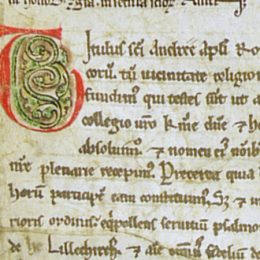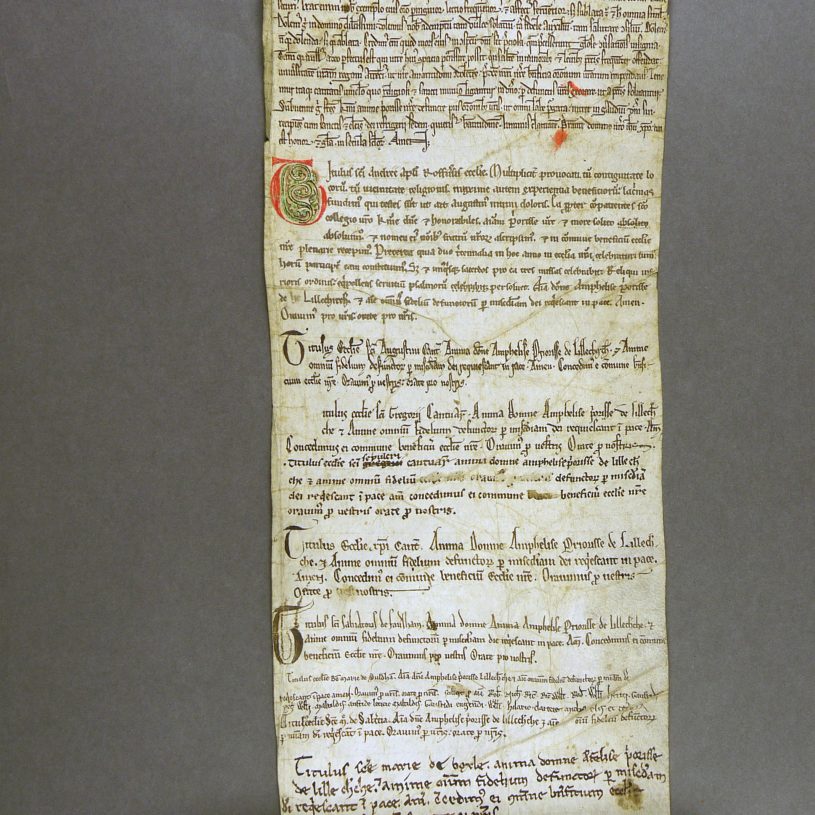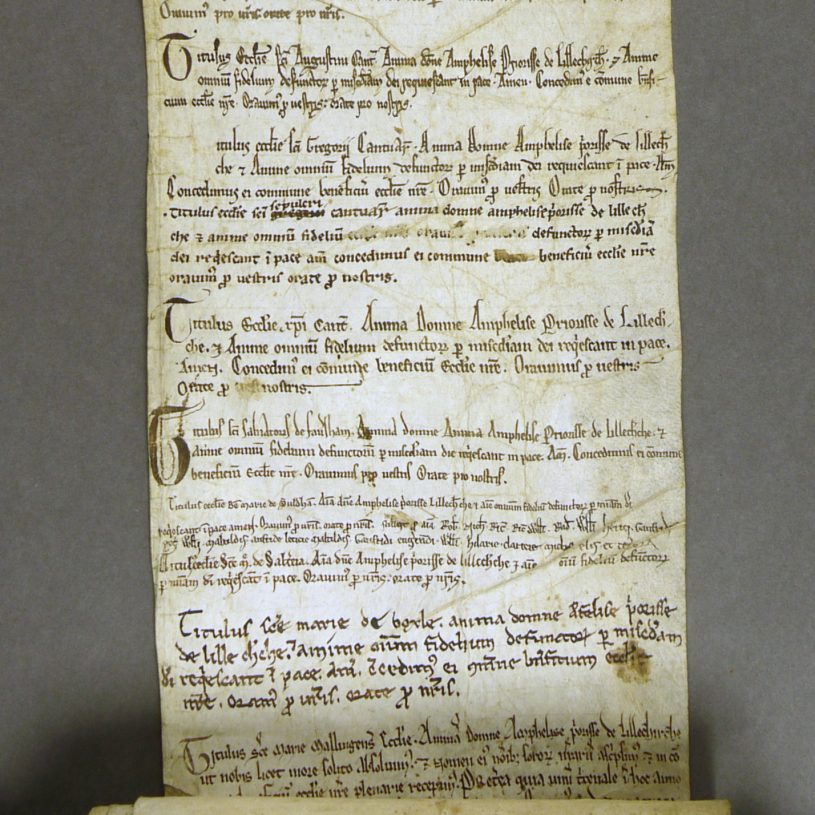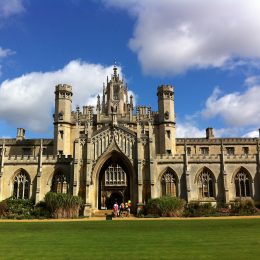Exploring the world of art, history, science and literature. Through Religion

Welcome to TreasureQuest!
Look through the treasures and answer the questions. You’ll collect jewels and for each level reached, earn certificates.
How far will you go?
You need an adult’s permission to join. Or play the game without joining, but you’ll not be able to save your progress.
11 metres long and 18cm wide, made from pieces of parchment sewn together to form a long strip, which is then rolled up.






Are there links to current religious practices or a modern equivalent?
Today people living across the country can be notified of a death, by a printed notice in a newspaper, or possibly via a family or organizsation’s facebook page. In medieval times, a messenger travelled on horseback or foot to each location, telling them the news face-to-face. He also probably gathered news from the religious houses he visited, passing on messages between them.

Where is it from, where is it now?

Websites
BBC Bitesize Keystage 3
Religion through time in the UK: Religion in the Middle Ages
British Library
Article by Alice Bovey on the British Library website about ideas of Heaven, Hell, and Purgatory, and how they can be seen in medieval manuscripts, including another mortuary roll, which is at the British Library. Lots of images.










 Faculty of Divinity
Faculty of Divinity